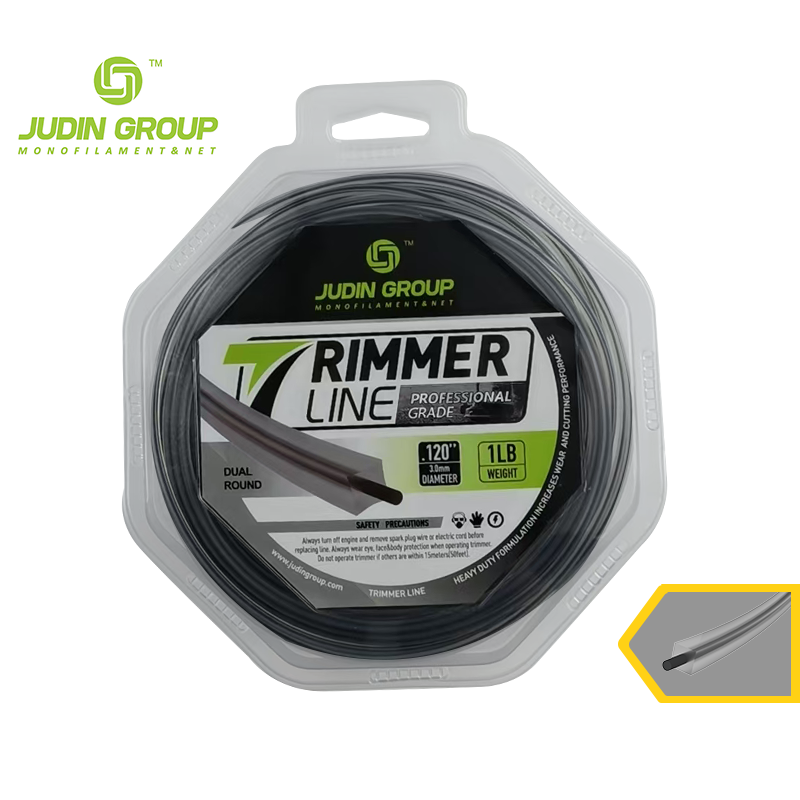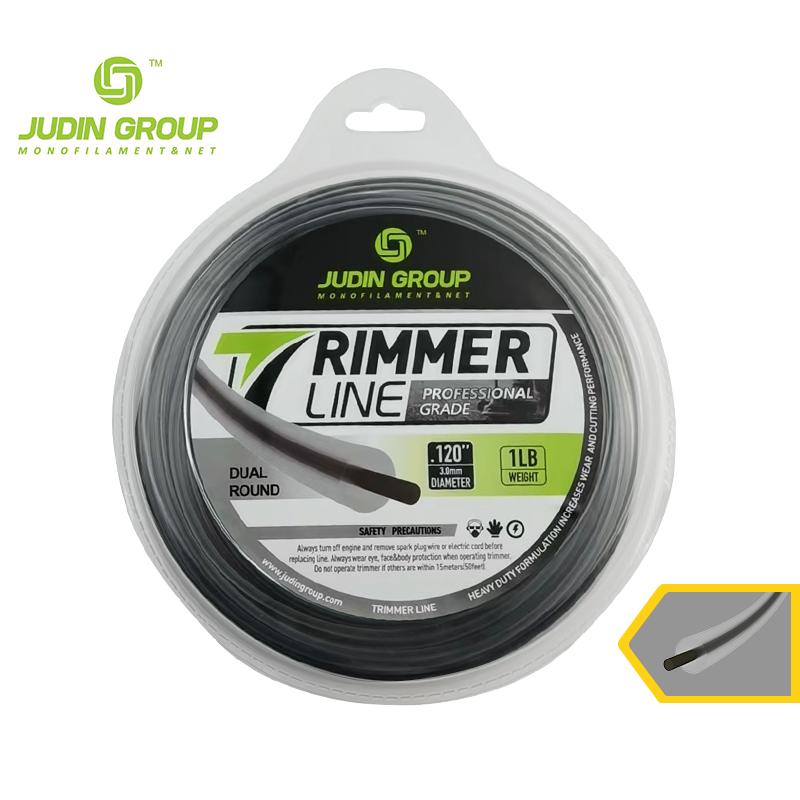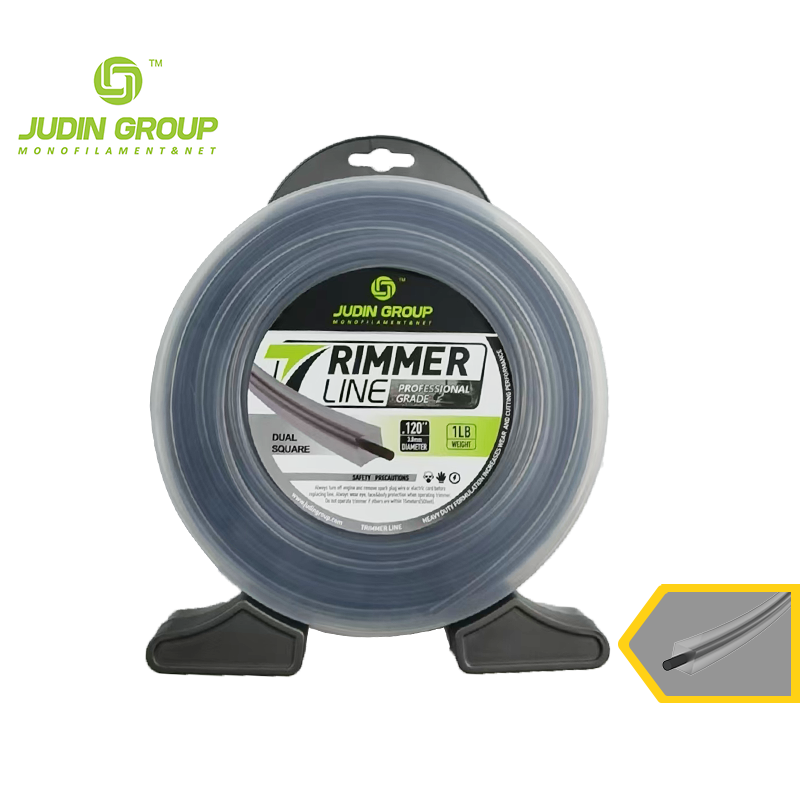When it comes to heavy-duty weed cutting, the right trimmer line can make all the difference. You need a line that’s tough, durable, and compatible with your trimmer. Picking the right one not only saves you time but also ensures your equipment performs at its best. Ready to upgrade your trimming game?
Key Takeaways
- Pick the best trimmer line for your work. Round lines work well for small jobs, while square and twisted lines cut thick weeds better.
- Use a trimmer line thickness of 0.105 to 0.130 inches for tough jobs. Thicker lines cut stronger weeds but need more power.
- Make sure your trimmer line fits your machine. Check the maker’s guide to prevent problems or damage.
Understanding Trimmer Line Basics
Types of Trimmer Lines
When it comes to trimmer lines, you’ve got a few options to choose from. Each type is designed for specific tasks, so knowing what’s available can help you make the right choice. The most common types include round, square, twisted, and serrated lines.
- Round lines are the go-to for light trimming. They’re durable and easy to use but may struggle with thicker weeds.
- Square lines are a step up. They have sharp edges that slice through tougher vegetation with ease.
- Twisted lines are all about efficiency. Their design reduces noise and vibration while delivering excellent cutting power.
- Serrated lines act like tiny saws. They’re perfect for cutting through dense, overgrown areas.
Each type has its strengths, so think about the kind of weeds you’re dealing with before making a decision.
Performance of Different Line Shapes for Tough Weeds
The shape of your trimmer line plays a big role in how well it handles tough weeds. For heavy-duty tasks, square and twisted lines are your best bet. Square lines offer multiple cutting edges, making them ideal for slicing through thick stems. Twisted lines, on the other hand, combine cutting power with reduced noise and vibration. This makes them a great choice if you’re working in a noise-sensitive area.
If you’re tackling dense, overgrown patches, serrated lines can be a game-changer. Their saw-like edges grip and cut through stubborn weeds effortlessly. Choosing the right shape can save you time and effort, so don’t overlook this detail.
Key Factors to Consider
Thickness: Ideal Diameters for Heavy-Duty Tasks
When it comes to heavy-duty weed cutting, the thickness of your trimmer line matters a lot. A thicker line can handle tougher weeds and last longer, making it perfect for demanding tasks. For heavy-duty jobs, you’ll want a line with a diameter between 0.105 inches and 0.130 inches. This range provides the strength needed to cut through thick stems and dense vegetation without breaking easily.
If you’re dealing with extremely stubborn weeds, you might even consider lines up to 0.155 inches. However, keep in mind that thicker lines require more power to operate. Make sure your trimmer can handle the extra load. Choosing the right thickness ensures you get the job done efficiently without overworking your equipment.
Tip: Always check your trimmer’s manual to see the recommended line diameter. Using a line that’s too thick could damage your machine.
Material: Nylon, Commercial-Grade Nylon, and Copolymer Lines
The material of your trimmer line plays a big role in its performance and durability. Most lines are made from nylon, but not all nylon is created equal. Here’s a quick breakdown of the options:
- Standard Nylon: This is the most common material. It’s affordable and works well for light to moderate trimming. However, it may wear out quickly when used on tough weeds.
- Commercial-Grade Nylon: This type is stronger and more durable than standard nylon. It’s designed for professional use and can handle heavy-duty tasks with ease.
- Copolymer Lines: These are a blend of nylon and other materials, like resin or metal. They offer the best of both worlds—strength and flexibility. Copolymer lines are perfect for cutting through thick, coarse weeds without breaking or fraying.
If you’re tackling heavy-duty jobs, commercial-grade nylon or copolymer lines are your best bet. They’re built to last and can handle the toughest conditions.
Trimmer Compatibility: Matching the Line to Your Equipment
Not all trimmer lines work with every trimmer. Before you buy, make sure the line you choose is compatible with your equipment. Check the manufacturer’s recommendations for line diameter and type. Using the wrong line can reduce performance or even damage your trimmer.
Some trimmers are designed to work with specific shapes, like square or twisted lines. Others might have limitations on thickness. For example, if you’re using a high-performance line like the .120 inch Dual Square Blister-2 Trimmer Line by Judin, ensure your trimmer can handle its unique design and thickness. This line is versatile and works with many trimmers, but it’s always a good idea to double-check.
Note: A compatible trimmer line not only improves cutting efficiency but also extends the life of your equipment. Don’t skip this step!
Special Features for Tough Weeds
Twisted and Multi-Sided Lines for Efficiency
When you’re dealing with tough weeds, efficiency is key. That’s where twisted and multi-sided trimmer lines come into play. These lines are designed to make your job easier and faster. Twisted lines, for example, have a unique spiral shape that reduces air resistance. This means they spin more smoothly and cut through weeds with less effort. You’ll notice how much quicker you can finish your trimming tasks.
Multi-sided lines, on the other hand, are all about precision. Their sharp edges create multiple cutting surfaces, which slice through thick stems like a knife through butter. Whether you’re tackling overgrown grass or stubborn weeds, these lines deliver clean, professional results. Plus, they’re less likely to fray or break, so you can work longer without interruptions.
Tip: If you’re looking for a reliable option, consider the .120 inch Dual Square Blister-2 Trimmer Line by Judin. Its square cross-section and helical prongs combine the benefits of both twisted and multi-sided designs, giving you unmatched cutting performance.
Noise Reduction and Cutting Power
Nobody likes a noisy trimmer. It’s not just annoying for you—it can also disturb your neighbors. That’s why noise reduction is such an important feature in modern trimmer lines. Twisted lines are particularly effective at minimizing noise. Their aerodynamic design reduces vibration, which not only makes them quieter but also more comfortable to use. You’ll appreciate the difference, especially during long trimming sessions.
Cutting power is another area where these lines shine. The unique shapes of twisted and multi-sided lines allow them to cut through dense vegetation with ease. They don’t just tear at the weeds—they slice cleanly, which improves efficiency and reduces wear on your trimmer. If you’ve ever struggled with a line that kept breaking or couldn’t handle thick weeds, upgrading to a high-performance trimmer line can be a game-changer.
Note: Using a trimmer line with optimized cutting power, like the .120 inch Dual Square Blister-2 Trimmer Line, ensures you get the job done faster and with less effort. It’s a win-win for both you and your equipment.
Tips for Effective Use
Proper Installation of Trimmer Line
Installing your trimmer line correctly is the first step to getting the best performance. Start by checking your trimmer’s manual for instructions. Most trimmers have a spool where the line needs to be wound. Make sure you cut the line to the recommended length before you begin.
When winding the line, follow the arrows or markings on the spool. These show the correct direction. If you wind it the wrong way, the line won’t feed properly, and you’ll waste time fixing it. Once the line is in place, pull it tight to avoid tangles. A snug fit ensures smooth operation and better cutting results.
Tip: Always wear gloves during installation. This protects your hands from sharp edges and makes handling easier.
Maintenance for Longevity
Taking care of your trimmer line keeps it working longer. After each use, clean the spool and remove any debris. Dirt and grass can clog the line, reducing its efficiency. Store your trimmer line in a cool, dry place to prevent it from becoming brittle.
If you notice fraying or wear, replace the line immediately. Using a damaged line can harm your trimmer and make cutting harder. Regular checks and replacements save you time and money in the long run.
Techniques for Maximizing Performance
Using the right technique makes all the difference. Hold your trimmer at a slight angle to the ground. This helps the line cut evenly and prevents it from digging into the soil. Move the trimmer in a steady, sweeping motion. Quick jerks can break the line or leave uneven cuts.
For thicker weeds, slow down and let the trimmer line do the work. Rushing can strain your equipment and reduce cutting power. If you’re using a high-performance line like the .120 inch Dual Square Blister-2 Trimmer Line, its unique design will make tough weeds easier to handle.
Note: Practice makes perfect. The more you use your trimmer, the better you’ll get at handling different types of vegetation.
Choosing the right trimmer line is essential for heavy-duty weed cutting. The right thickness, material, and compatibility can make your work faster and easier. Take time to explore different options and see what works best for your needs. With the right choice, you’ll tackle tough weeds like a pro!
 |
 |
 |
FAQ
What’s the best trimmer line shape for heavy-duty weed cutting?
Square or twisted lines work best. Square lines slice through thick stems, while twisted lines reduce noise and vibration for smoother operation.
Tip: Try multi-sided lines for even more cutting power!
How do I know if a trimmer line is compatible with my equipment?
Check your trimmer’s manual for recommended line diameter and shape. Using the wrong line can reduce performance or damage your trimmer.
Can I use the same trimmer line for all types of weeds?
Not always. Light weeds need thinner, round lines. Tough weeds require thicker, square, or twisted lines for better durability and cutting efficiency.
Post time: May-27-2025







